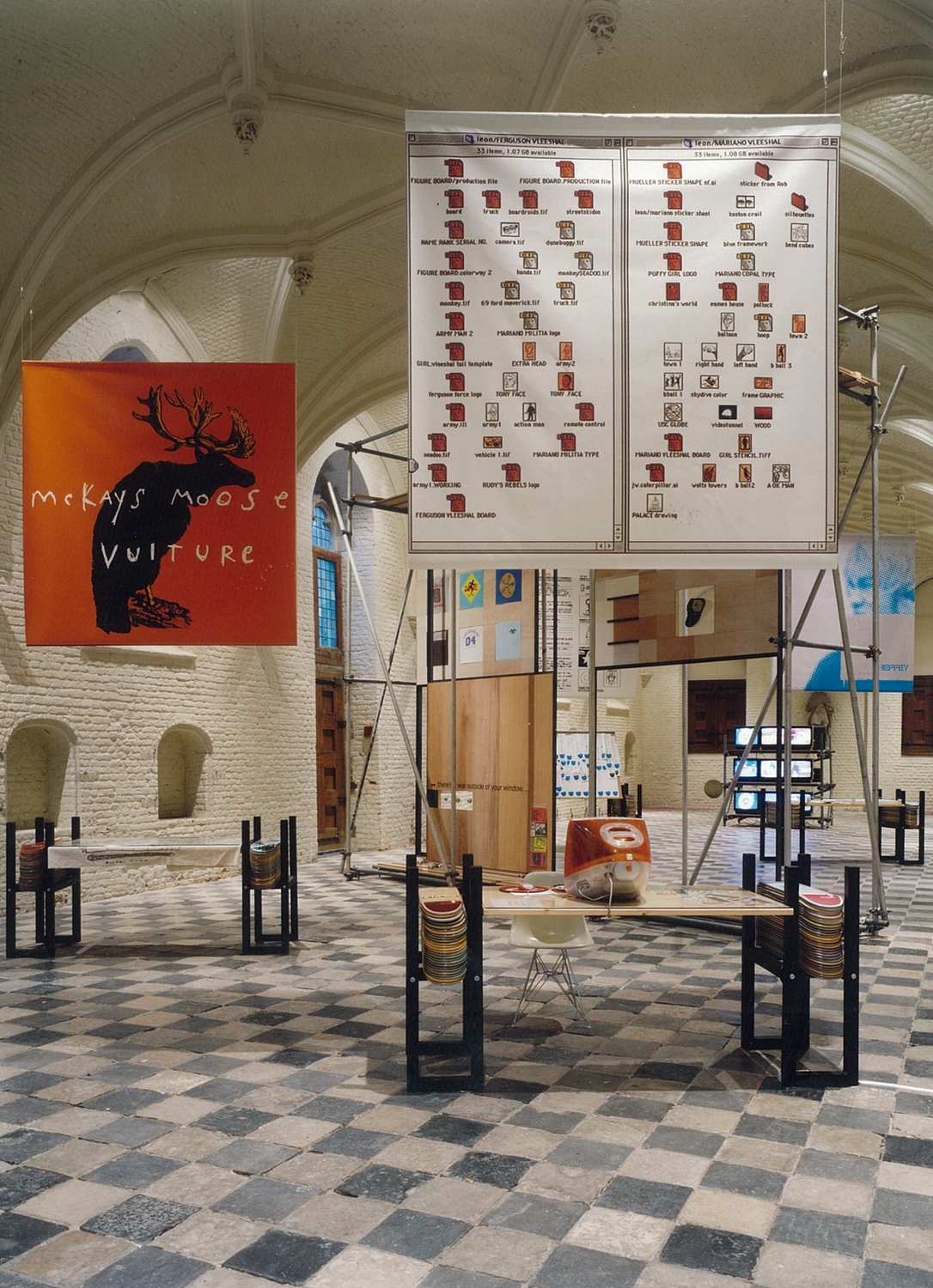This is the Flow
The Girl Skateboard Company, Gyz La Rivière, Robert Rosenau
Group exhibition
17 June – 19 August 2001
Vleeshal (Map)
Curator: Rutger Wolfson

'This is the Flow' was a project highlighting the creative mentality of skateboard culture. The exhibition came about in a unique collaboration between De Vleeshal, US skateboard manufacturer The Girl Skateboard Company and young Dutch artists/skateboarders La Rivière en Rosenau.
Skateboarding is one of the most vibrant and creative subcultures, encompassing not only skateboarding itself but also fashion, music, magazines, photography and video. The enormous creativity involved runs a close second to that of the visual arts. And so it comes as no surprise that quite a few people with a skateboarding background should have crossed over to the visual arts. In the opposite direction, a large number of visual artists have been inspired by skateboard culture.
Much of the creative talent in skateboarding is centred around businesses, often set up by skateboarders themselves. These companies design and develop skateboards, magazines, entire clothing lines, videos of tricks performed by skateboard professionals and talented amateurs, release music, etceteras. The designers, photographers and filmmakers working within the skateboarding industry are restrained only by practical requirements, such as the necessary shape of a skateboard graphic (it must fit on the bottom of the board). The freedom this awards them contributes much to the great originality, humour and creativity of their work. It is not unusual for the designers to have been to art school, but to have opted to work for a skateboard company. For the love of skateboarding, but also because they prefer seeing their work on the streets (on a T-shirt, for instance, or on a skateboard) than within the comparative isolation of a museum or gallery.
The renowned Los Angeles skateboard manufacturer The Girl Skateboard Company was set up in 1993 by Rick Howard and Spike Jonze. Because of his work as a film director, Jonze (Being John Malkovich and Adaptation) is no longer involved full-time with the company. Rick Howard, however, is, and has an almost legendary status in the skateboarding world, being one of the few entrepreneurs to still skateboard professionally.
Exclusively for 'This is the Flow', The Girl Skateboard Company designed the De Vleeshal Series: a new series of ten different skateboards, which was to be distributed world-wide later in the year. The De Vleeshal Series was presented in five `stations`, also specifically designed for the exhibition. The design of these stations was one of ambiguous functionality: a mix between a traditional museum showcase, a trade fair stand, and the desks at which the De Vleeshal Series had been designed. The stations contained many sketches and other material used in the making of the new skateboard series – thus providing an insight into the preceding design process.
The Girl Skateboard Company`s presentation was completed by a number of products designed especially for the exhibition, among which a publication made up as a `zine` (from magazine or fanzine): with interviews, reports and arts pages, like many others produced by the skateboarding world.
Rotterdam artists and skateboarders Gyz La Rivière and Robert Rosenau built their installation 'Narratief' (Narrative) especially for 'This is the Flow', incorporating every skateboard, wheel, truck, shoe, T-shirt, etceteras they had ever used in the work. The wear and tear of the materials included in this layered, three-dimensional collage created a good picture of how they had been used. In combination with video fragments of themselves, their friends and their heroes, their work also told the history of skateboarding – as seen from the personal perspective of La Rivière and Rosenau.